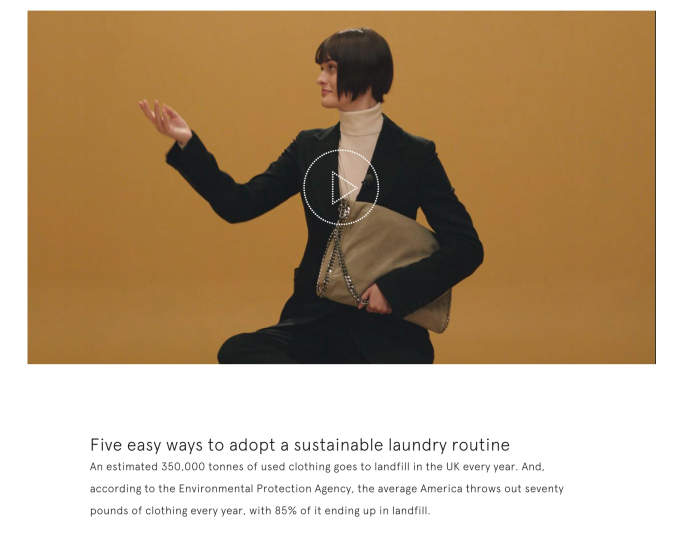As more research and data appear, it seems everything these days can play a role in the Earth’s pollution, and unfortunately, the fashion industry is no exception.
According to Business Insider, fashion production makes up 10% of carbon emissions, desiccates water sources, and pollutes rivers and streams. What’s more, 85% of all textiles go to the dump and landfills each year, while washing some types of clothes can even send thousands of bits of plastic into the ocean.
The LA Times even reports that the fashion industry exhausts more energy than aviation and shipping combined, according to the United Nations Environment Program. Every second, one trash truck’s worth of textiles is either burned or sent to a landfill, the U.N. said.
Although this is startling information, many people are unaware of this cause and affect situation. In a nutshell, sustainable and ethical fashion is a methodology geared towards manufacturing, sourcing and designing clothes, in a way that maximizes the benefits to the fashion industry and civilization, while also minimizing the impact on the environment. In turn, these ethically-driven fashion brands are seen as being conscious and engaged in the many social issues the fashion industry affects.
Fast fashion, on the other hand, is described as being inexpensive clothing produced rapidly by mass-market retailers in response to the latest trends, according to the Oxford Dictionary.
Popular names in fast fashion include UNIQLO, H&M, GAP, TopShop and Zara, just to mention a few, but while these brands were once seen as drastically inexpensive disruptors, there are now even cheaper, high-speed alternatives, such as Misguided, Forever 21, Zaful, Boohoo and Fashion Nova.
In an attempt to become more sustainable, many high fashion brands have taken small but helpful steps to ensure they are not the main source of pollution and environmental damage. Gucci has announced they will no longer make garments with real fur, while Stella McCartney prides herself on giving respect to nature by only using natural materials like cashmere, viscose and cotton, and Vivienne Westwood takes the minimalist approach by encouraging shoppers to simply buy what is needed and make it last.
So what can everyday folks do to save the planet from a fashion disaster? Recycle, resell, and buying used items are all great ways to do ones part. Luxury consignment websites such as The RealReal or Gilt are great for this type of strategy because everything is verified and safely handled and distributed, so buyers can sleep soundly at night knowing their fashion purchases are Mother Earth approved.
by Tori Ellis

